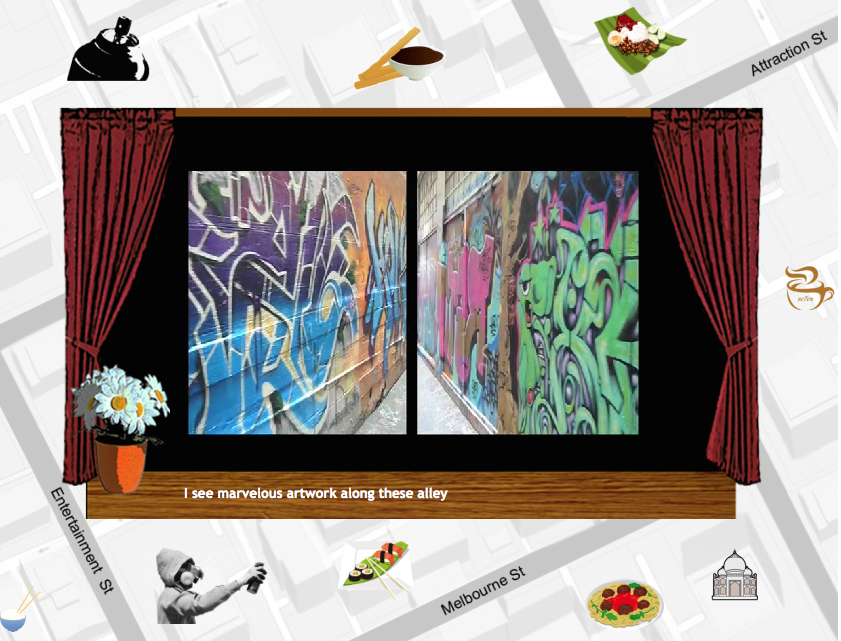
This week seemed to give us an arsenal of knowledge for how we can think about things as filmmakers. Below are my observations.
Interface design is incredibly important in Korsakow. Think of it as mis-en-scene. You are composing a visual space, which you will use to direct people. Don’t underestimate your audiences by showing them everything. You’re creating a world which you want to invite someone into, so that they can explore on your behalf. Don’t signpost everything, because there is poetry in absence and presence. It’s about seduction and reward: that’s what exploration is.
When thinking about how you curate your k-film, you have to think about what you include and exclude (because we all know about the politics behind these actions, right?). You have to think about video, sound, and if there will be layers in the piece? You also have to consider which software/medium is right for your message, such as whether you will used a participatory form of creation or a closed database system like Korsakow. Decide what kind of linearity it will follow. Start sketching. Think about the indexing, key wording, themes, patterns and taxonomy you are creating as you go along. Think, using granularity, about your fragments as individual units – what do they look like? How long are they? Consider remix, and how they are going to be put together, combined or recombined.
As a filmmaker, let plurality and multiplicity happen. There will never just be one relation, and you won’t ever get to decide what the relation/s is/are. Listen to the content and the meanings behind it. Don’t subscribe to the colonising idea that we treat our media according to what we want it to do, instead of thinking about what it can do. Don’t invest so much in the notion of conclusion – this is not a trait that bestows quality on your work. Make a film that lets the viewer have an experience that they want and like. It’s all up to you as a filmmaker.
(Image via flickr)






